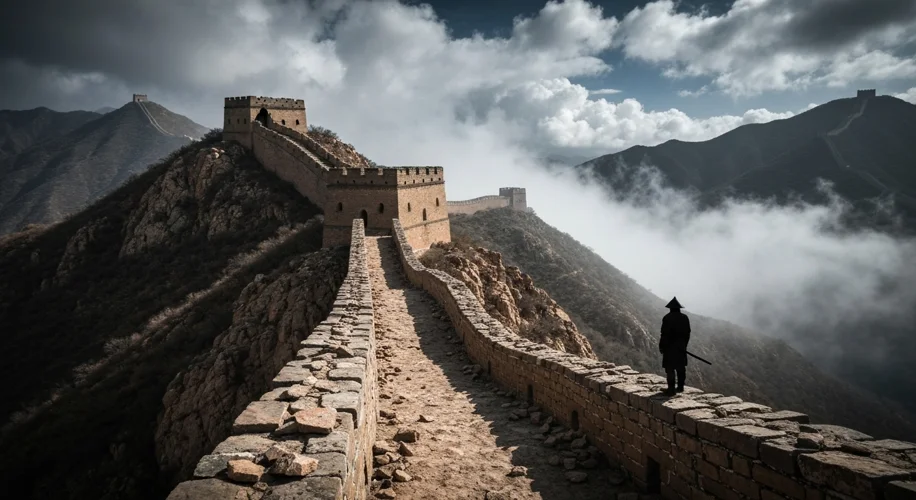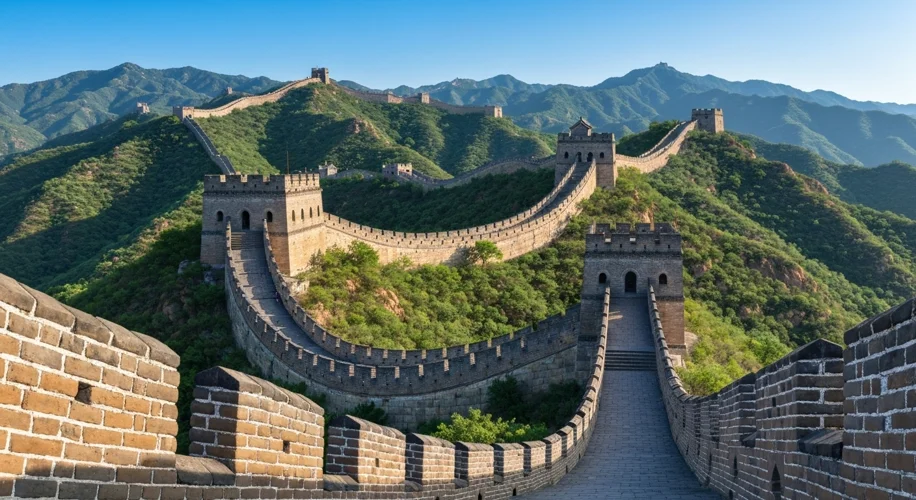Imagine a dragon, not of scale and fire, but of rammed earth and stone, stretching across mountains, deserts, and plains. This is the Great Wall of China, a monumental testament to human ambition, perseverance, and, tragically, immense suffering.
Its story doesn’t begin with a single, grand vision, but rather a series of desperate, isolated efforts. As early as the 7th century BCE, during China’s tumultuous Spring and Autumn period, warring states like Qi and Yan began constructing defensive walls to protect their territories from both rival states and nomadic incursions from the north. These early walls were often made of tamped earth, a technique called hangtu, where layers of soil were pounded into wooden frames, creating surprisingly robust structures. Picture a lone sentinel, shivering in the biting wind on a crude earthen rampart, his gaze fixed on the desolate horizon, the only sound the rustling of dried grass and the distant cry of a hawk.

The real impetus for a unified wall, however, came with the rise of Qin Shi Huang, the First Emperor of unified China in 221 BCE. Fresh from conquering his rivals, he ordered the connection and extension of existing walls, creating a formidable barrier against the Xiongnu, a powerful confederation of nomadic peoples who constantly threatened his new empire. This was a staggering undertaking. Millions of laborers, including soldiers, peasants, and convicts, were conscripted for this massive project. They toiled in brutal conditions, facing harsh weather, treacherous terrain, and a constant threat of attack. Food was scarce, disease rampant, and the emperor’s demands unforgiving. Many a worker never saw their family again, their bones becoming part of the very wall they were forced to build.
Generations later, the Han Dynasty (206 BCE – 220 CE) further expanded and fortified the Wall, pushing it westward into the Gansu Corridor to protect the lucrative Silk Road trade routes. Imagine merchants, their camels laden with silks and spices, navigating this perilous passage, the imposing silhouette of the Great Wall a constant guardian against the dangers of the steppe.
But the Wall’s story is not solely one of defense. It also served as a vital communication and transportation network. Signal towers, spaced at regular intervals, allowed for rapid transmission of messages using smoke signals during the day and fire at night. Garrisons stationed along the Wall provided troop deployment and logistical support. The Wall was a living, breathing entity, a symbol of imperial power and control.
The Ming Dynasty (1368–1644) is perhaps most famous for the magnificent stone and brick sections of the Great Wall that we recognize today. Faced with a renewed threat from the Mongols, the Ming emperors invested heavily in rebuilding and reinforcing the Wall, creating a more sophisticated and resilient defense system. Towers were elaborately constructed, battlements reinforced, and sophisticated gatehouses erected. This era saw the Wall reach its zenith in terms of construction and strategic importance.
The human cost, however, remained a dark undercurrent. The sheer scale of labor required was immense. Diaries and historical accounts, though scarce, paint grim pictures of exhaustion, starvation, and death. It’s said that the sheer number of lives lost during its construction is so vast that the Wall could be considered the longest cemetery in the world. Think of the gruel they ate, the calluses on their hands, the ache in their bones, and the gnawing fear of punishment for falling short of their overseers’ expectations.
Despite its immense scale and the formidable resources poured into its construction, the Great Wall was not always an impenetrable barrier. It was breached on numerous occasions by determined invaders, including the Manchus, who eventually established the Qing Dynasty (1644–1912). Its effectiveness was often dependent on the strength and vigilance of the soldiers manning it. Yet, its symbolic power as a representation of Chinese identity and resilience has endured.
Today, the Great Wall stands not just as a historical relic, but as a potent symbol of China’s enduring spirit. It reminds us of the incredible capacity of humans to achieve the seemingly impossible, even at a terrible price. As you gaze upon its serpentine form snaking across the landscape, remember the countless hands that shaped it, the silent stories etched into its stones, and the enduring legacy of one of humanity’s most awe-inspiring, and haunting, achievements.

